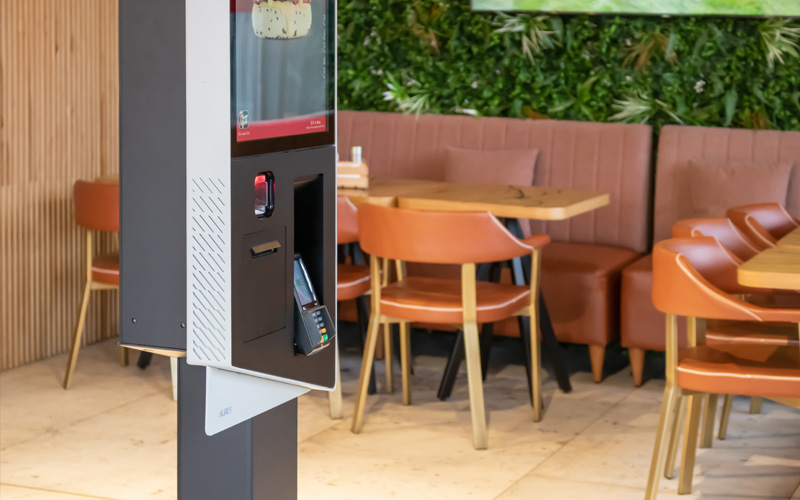Kiosks have come a long way in a short space of time. Not all that long ago, the only place you’d expect to find a ‘self-service’ option was at a supermarket checkout or when withdrawing money from a cash machine.
Now, kiosks are found everywhere. You’ve probably used them to place your order in a fast-food restaurant or to buy tickets at your local cinema. Across retail, we’re now seeing kiosks deployed not just at checkout but as information points throughout a store, letting consumers look up product details and extended ranges.
Similarly, in any kind of large venue or space – everything from leisure attractions to shopping centers to university campuses to office complexes – kiosks are used as wayfinding information points where people can look up where they want to get to at their own convenience.
And during the course of the COVID-19 pandemic, we’ve seen kiosks take on an important role in minimizing person-to-person contact and controlling the flow of people in public places. Self-check-in has become a familiar sight at clinics, hotels and workplaces of every kind. Fitted with the right tools, kiosks can even help to screen people for COVID symptoms, or ask them to confirm vaccination or test status.
We could go on and on detailing all the different uses kiosks are put to these days. Safe to say, there are a lot of them. As always with the way technology evolves, this has been driven largely by demand.
But on the flipside of that, kiosk manufacturers have been able to respond to that demand by shifting the way kiosks are designed and built. In the past, a lot of kiosks were purpose built for specific purposes (think of unique examples like supermarket self-checkouts). But as use cases have multiplied, manufacturers have had to develop more efficient approaches, rather than try to reinvent the wheel every time a new application comes along.
That’s where modular kiosks come in.
Back to first principles
Modular kiosk design starts with breaking the concept down into its first principles. Across the many hundreds of use cases that exist for kiosks these days, nearly all of them share three basic hardware components in common – a touchscreen, a processing unit and a stand.
A kiosk is after all a computing end point. With a touchscreen, a processor and the right software, you can let people perform many thousands of tasks. We know that from smartphones and tablets. A kiosk takes the same principle, mounts it securely in a shared space, and lets people do whatever it is they need to do in that context.
The touchscreen and software combination can cover a staggering range of tasks. But on their own, they can’t do everything. That’s why a modular kiosk is more than just an oversized tablet on a stick. It’s designed so it can easily have extra bits of hardware added to it that will extend its functionality to complete other tasks as required.
The latest generation of AURES kiosks, the KRYSTAL and KOMET ranges, are modular in their design. That means they are built so a variety of hardware peripherals can be added to them. Card payment terminals, printers for tickets and receipts, barcode, RFID and biometric scanners for handling everything from grocery self-service to ID authentication, even germ-busting UV light units to help stop the spread of pathogens – all of these and many, many more can now simply be tagged on to a modular kiosk as required.
The two big benefits of this approach are that it increases flexibility while reducing costs. Custom building a kiosk from scratch with functions X, Y and Z is expensive. Buying a ready-to-go base and mixing and matching available peripherals to suit is much more cost effective. It makes it affordable enough to deploy kiosks tailored for several different functions in a single environment, matching the technology more closely to the intended purpose.
Overall, modular kiosks are playing a big role in extending the footprint of kiosks further than ever before.




